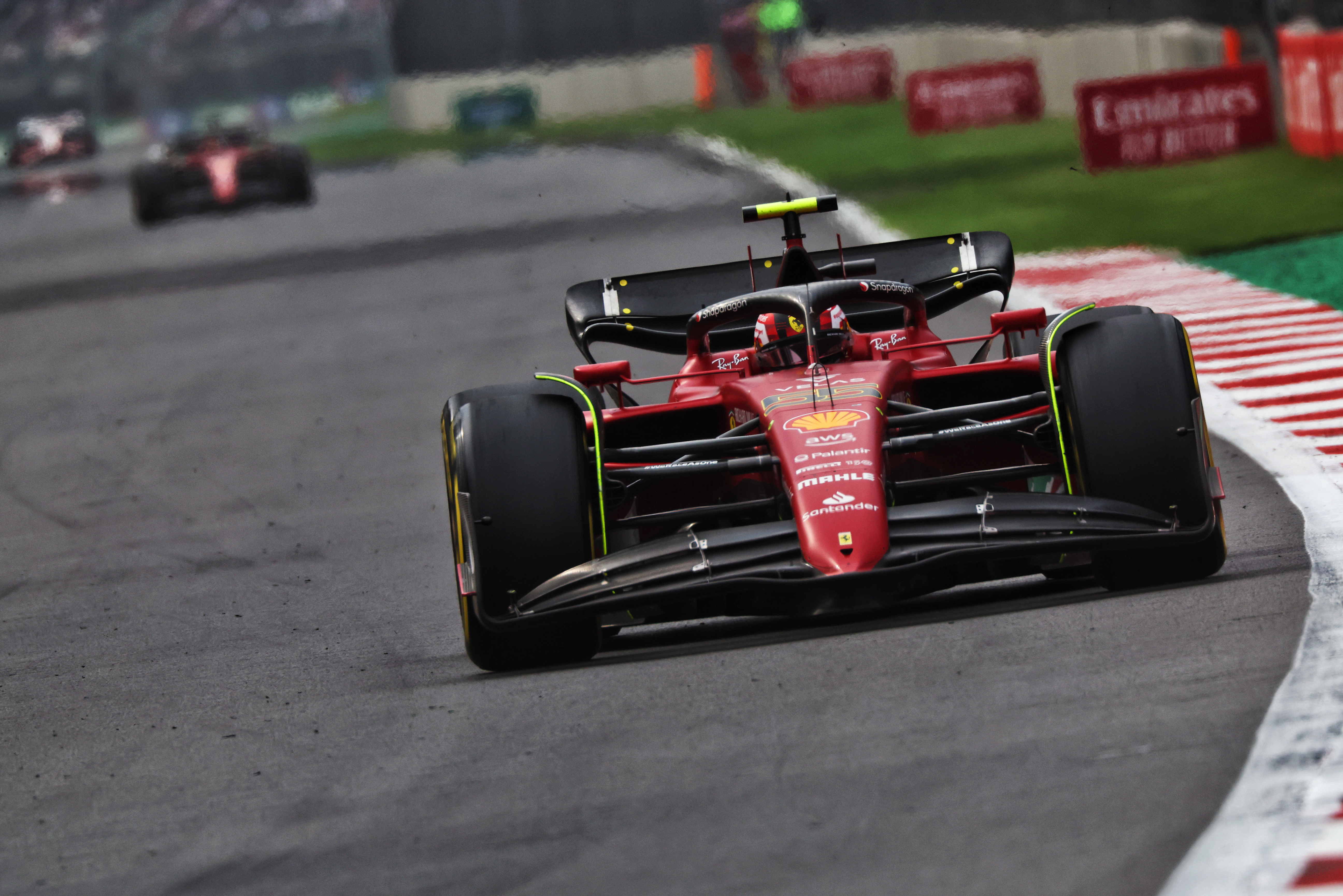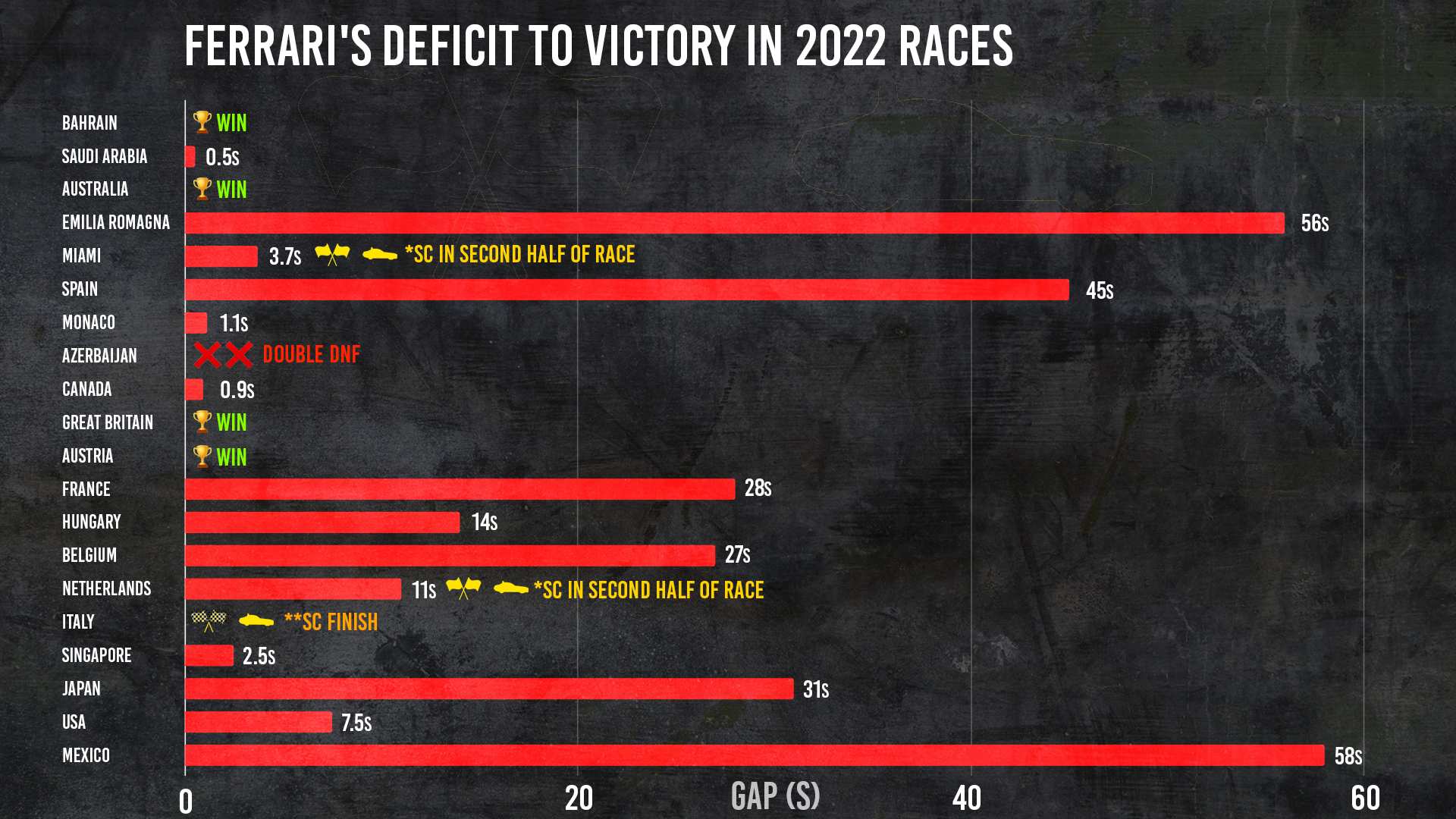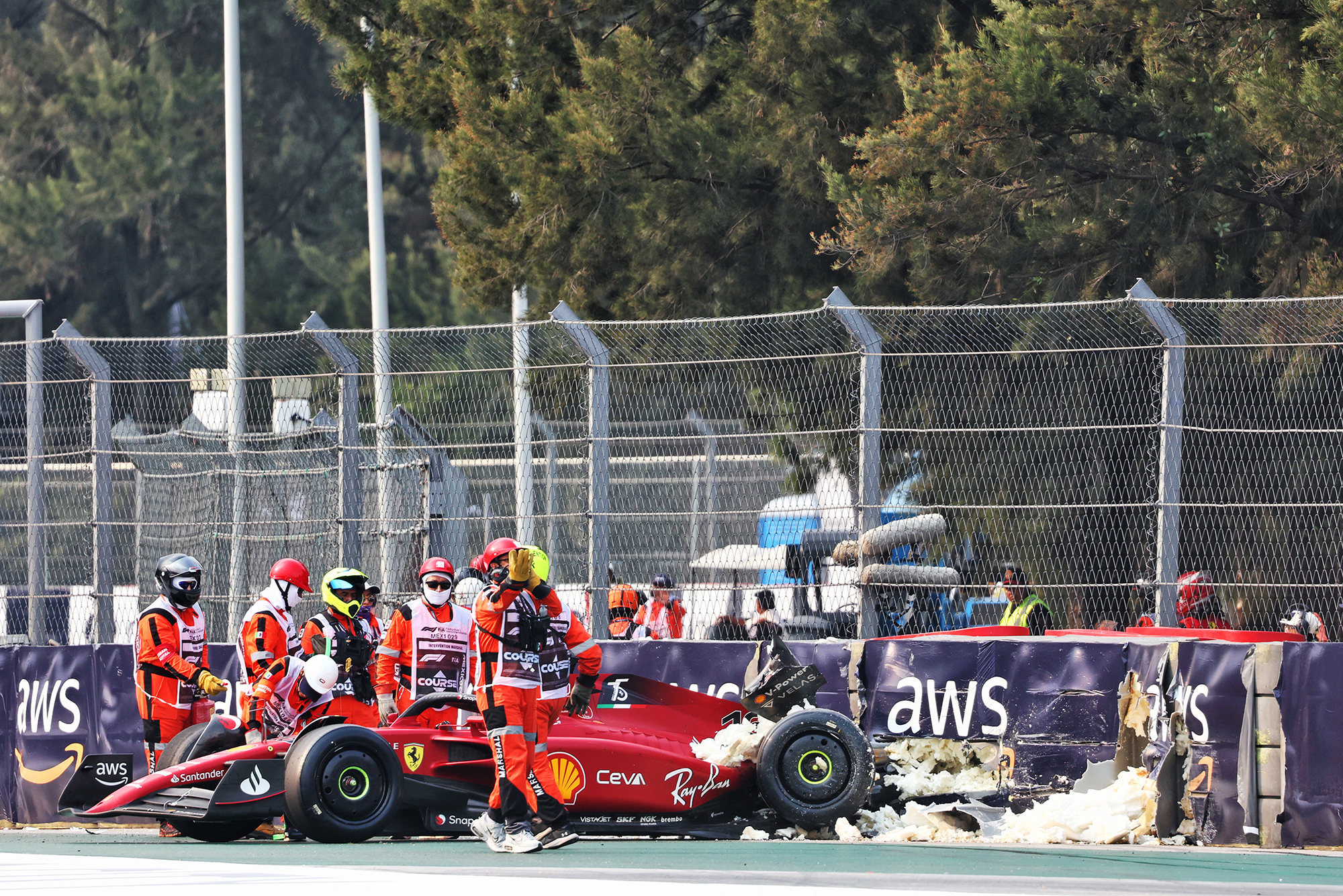It’s been 113 days since Ferrari won a Formula 1 race and it’s a wait that might continue for quite some time based on its hopeless Mexican Grand Prix weekend.
Ironically, arguably its worst performance of 2022 in Mexico City has its roots in one of its finest races of the year at the Austrian Grand Prix, where Charles Leclerc took Ferrari’s last grand prix victory.
While Leclerc passed Verstappen three times to win at the Red Bull Ring, his team-mate Carlos Sainz was denied a chance to make it a Ferrari 1-2 when his car caught fire.
The Austrian circuit is one of the higher-altitude tracks on the calendar, but Mexico City’s altitude is over three times as high.
That led to Ferrari deciding to “compromise” its power unit performance in Mexico to ensure it wouldn’t suffer from similar reliability problems.
That compromise centred around the turbo in Ferrari’s power unit, which is smaller than the turbos used by its rivals.

Smaller turbos can generate as much power as larger turbos by running faster and they need to run even faster when the air is thinner at high altitudes like in Mexico.
The level at which Ferrari’s smaller turbo would have needed to run at would have put it at risk of a failure so it elected to turn down the power of the turbo.
This stripped what had previously been an advantage away from Ferrari as, usually, its smaller turbo requires less electrical energy and subsequently has a significant acceleration advantage out of the corners.
Sainz and Leclerc were therefore powerless to do any better than fifth and sixth in the race, finishing almost a minute behind race winner Max Verstappen – Ferrari’s biggest race deficit of 2022.

And what makes that deficit even worse is the fact that Ferrari – unlike on numerous prior occasions in the 2022 F1 season – was on completely the right race strategy.
“It has certainly been a very difficult weekend,” team boss Mattia Binotto admitted after the race.
“Already yesterday in qualifying, we were quite behind the pole position [Sainz was 0.576 seconds adrift of pole and only 0.05s quicker than the Alfa Romeo of Valtteri Bottas who beat his team-mate Leclerc], normally in the qualy, we are quite competitive.
“In the race it has simply emphasised that we were not comfortable with the track this weekend. Our overall performance has not been great no doubt. We were off the pace in the race.
“The compromise that both of the [drivers] are mentioning, we were not at our best performance for the weekend in terms of the power unit.”
But Binotto was quick to stress that the power unit compromise was only “part of the equation” and not the only cause, with FP2 being used as a tyre test among the other contributing factors.
However, the compromise likely affected other areas such as the challenge of trying to find the right balance and set-up with a different power output to any other race this year and the aforementioned nullification of Ferrari’s typical 2022 acceleration advantage.
This likely contributed to a somewhat erratic F1-75 this weekend that looked nervous on the kerbs and through the Esses section in particular.
“It was a fight. That’s why I couldn’t put a lap together,” Sainz said after qualifying, and Leclerc’s off in second practice was further evidence of the imbalance.

But it clearly doesn’t explain all of Ferrari’s woes and continues a worrying trend for Ferrari in the second half of a 2022 season that it started with the fastest car.
Binotto also indicated that Ferrari would need a full review to find out exactly what went so badly wrong.
The team has been here before. It suffered a miserable weekend in Spa after the summer break, as it was utterly powerless to stop Verstappen from romping from 14th on the grid to win while Leclerc finished sixth and well over a minute back despite starting one place behind Verstappen.
A full review followed that race, where Ferrari appeared to understand its problems and rectify them for another low-downforce track at Monza two weeks later.
“Already in Spa it has been very similar where we have been very slow and it was more outstanding [anomalous] in terms of bad pace,” said Binotto.
“Here is similar, it’s something we need to look at and try to react to for the last two races.”
Reacting in Brazil might be tough as the Interlagos circuit is marginally higher than the Red Bull Ring venue that prompted Ferrari’s adjustment.
It’s still way off the altitude that forced Ferrari’s most extreme power unit compromise of the season, but we still may see a smaller one in Brazil to avoid further reliability issues at a time where DNFs would leave it vulnerable to Mercedes in the constructors’ championship.


